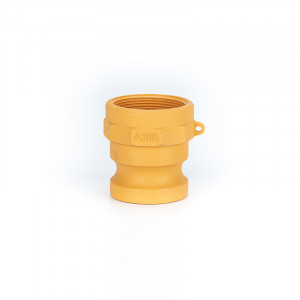In this blog post, we’re going to show you how to compare different Camlock fittings and find the best one for your needs. We’ll also discuss some common uses for camlock fittings and give you some tips for troubleshooting them if something goes wrong.

Camlock fittings for water drainage
Water drainage can be a challenging task when it comes to finding the right fittings. Camlock fittings offer an easy way to connect different pieces of tubing, and they come in a variety of sizes and configurations.
To make the best decision when choosing camlock fittings, you need to compare the various options available. This includes looking at the size of the fitting, the type of connective material, and how easily it can be attached.
Some factors to consider when comparing camlock fittings include:
– Size: Camlock fittings come in a variety of sizes, from small connectors for water lines to large connectors for sewer lines. Make sure that you select the size that will fit your needs.
– Type of Connective Material: Camlock fittings are made from different types of connecting materials, including metal, plastic, and rubber. Select the type that is most appropriate for your application.
– Ease of Attachment: Some camlock fittings have pins that help secure them into place; others require screws or bolts to hold them in place. Compare how easily each type of fitting attaches to tubing so you can choose the option that is easiest to use.
Camlock fittings for industrial fluid pipeline and oil pipelines
Camlock fittings are a popular option for industrial fluid pipeline and oil pipelines because they offer a variety of sealing options and pressures. There are a few things to consider when choosing a camlock fitting, including the type of pipeline it will be used on and the size of the fitting.
In general, standard camlocks can handle pressures up to 300 PSI. For higher pressures, special camlocks with increased pressure ratings can be used. Camlock fittings can also be customized to fit specific pipelines or applications. For example, some camlocks are designed for use in harsh environments while others are specifically designed for gas pipelines.
When comparing different camlock fittings, it is important to consider the seal types offered and the pressures that each fitting can handle. Additionally, it is important to know the dimensions of the fitting so that it will fit properly on the pipeline.
Camlock fittings for sewer systems
Camlock fittings are an excellent way to connect wastewater pipes to your sewer system. They are simple and easy to use, and they can be connected in a variety of ways. Here’s a look at the different types of camlock fittings, as well as how to choose the right one for your system.
Types of Camlock Fittings
There are two main types of camlock fittings: ball and tee fittings. Ball fittings have a female end (the smaller end) that fits over the male end on the pipe, while tee fittings have a male end that fits over the female end.
Ball Fittings
The most common type of camlock fitting is the ball fitting. This fitting has a female (smaller) end that fits over the male (larger) end on the pipe, and it has a circular shape. You can use this type of fitting with either PVC or CPVC pipe, and most home plumbing suppliers carry them in stock.
Tee Fittings
A tee fitting also has a female (smaller) end that fits over the male (larger) end on the pipe, but it doesn’t have a circular shape. You can use this type of fitting with both PVC and CPVC pipe, but you need to make sure that it’s compatible with the pipe material: PVC Tee Fittings work with PPVC pipe, while CPVC
Camlock fittings for food processing plants
Camlock fittings are often used in food processing plants to connect valves and pipes. They’re suitable for high-temperature applications, and they can handle a wide range of pressures and flows.
If you’re looking to buy camlock fittings, here’s how to compare different options:
- Size: Camlock fittings come in various sizes, so make sure you choose the right one for your application.
- Material: Camlock fittings are usually made from brass or steel, but they can also be made from other materials if necessary.
- Flows: Camlock fittings can handle a wide range of flows and pressures, so make sure you choose the right one for your application.
- Valves: Camlock fittings come with many different types of valves, so make sure you choose the right one for your application.
- Connections: Camlock fittings come with connections that are compatible with a variety of valves and pipes.
Conclusion
Check out the camlock fittings made in Union Metal and find the perfect fit for your needs. From aluminum to nylon, it offers everything you need to outfit any commercial setting. If you’re not sure which products would be best for your business, don’t hesitate to give Union Metal a call and its team of experts will help you decide which fitting is right for you.


Leave A Comment